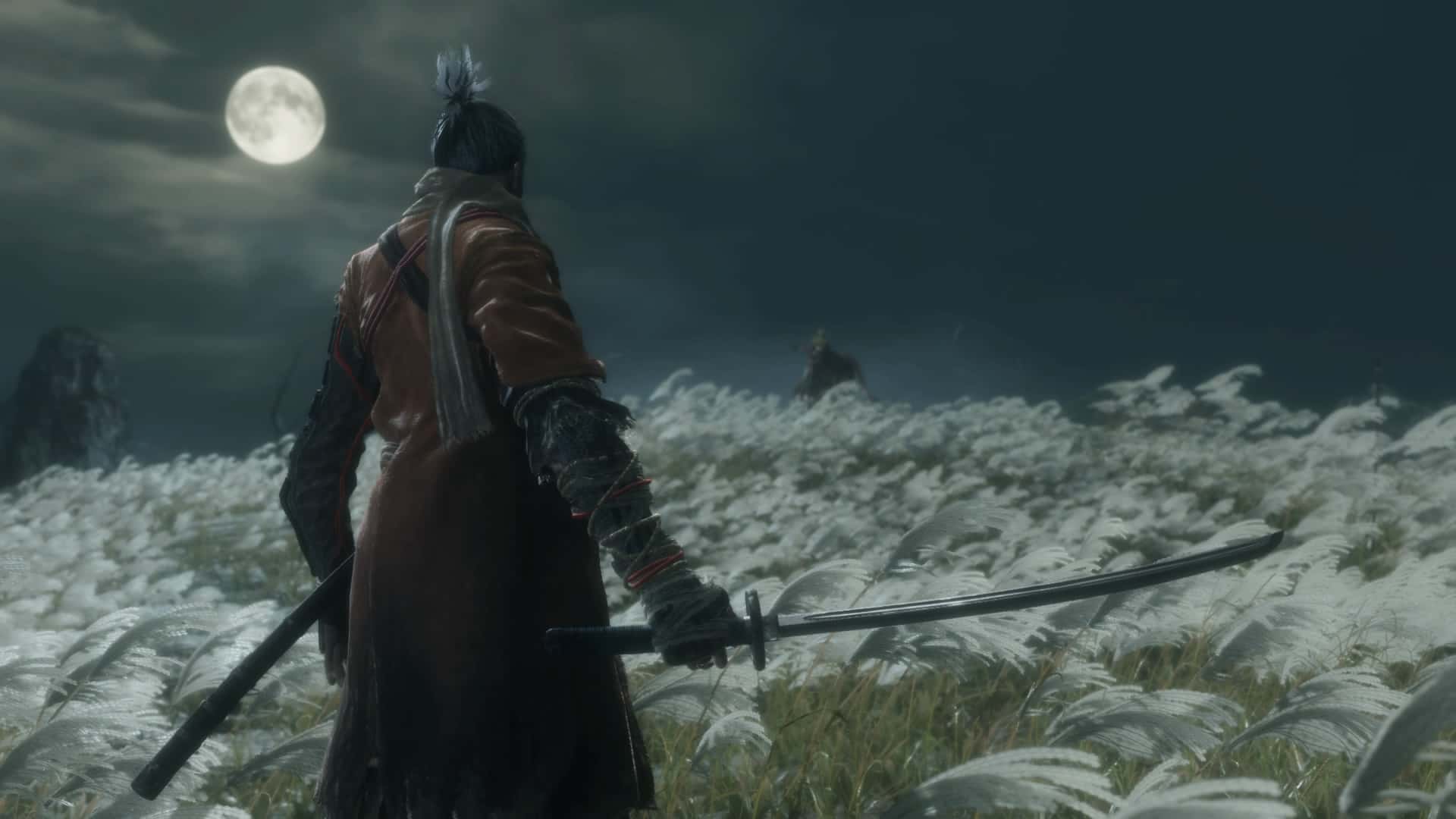Review: Sekiro: Shadows Die Twice
27th March 2019I’d like to start this review with a confession.
I, the esteemed author of this piece of assuredly high quality video game journalism, have never played a Dark Souls game. Some of you will be understandably incensed by this revelation. You’ll stand up in front of your computer, phone or toaster (or whichever other gadget you’re using to read this) and aggressively ask the eternal question: “How in the name of the chosen undead can you hope to accurately review Sekiro: Shadows Die Twice, the latest release of our magnificent overlords From Software, without having experienced the life-changing series of games which formed their monstrous reputation?”
My humble answer to you would begin by stating that I’ve never played a Dark Souls game because I’m not into masochism.
At this point, if you aren’t familiar with the Dark Souls games, you may be questioning why I would liken them to the practice of deriving pleasure from pain and why not having played them would render me unqualified to review Sekiro.
The Dark Souls series, to which Sekiro is a close cousin, are known by reputation to be fairly difficult games, offering an experience relatively similar to repeatedly slamming one’s genitalia in a car door until said genitalia are thoroughly battered into pulp, then growing an entirely new set of love equipment and immediately resuming the aforementioned activity until you become incredibly adept at sucking them back up into your body a millisecond before the door slams shut.
Hopefully this subtle metaphor helped you understand why I had declined to play any of From Software’s games up until this point.
So, what was different about Sekiro that made me willing to pull down my trousers and wrap my fingers around the door handle? First of all, there was the setting, a fantasised version of the Sengoku period of Japanese history, which can be largely summarised as being a good time to be a fan of war, death and samurai swords. It offers a lot of potential to provide a beautiful background to gameplay; or it would, if your mangled corpse wasn’t being flung into it with metronomic regularity.
Secondly, I’d decided that enough was enough. It was time to see if From Software games were as tortuously difficult but paradoxically engaging as internet folklore had foretold. As it turns out, I couldn’t have known just how correct the internet folklore would be
about the difficulty part.
I’ve only been playing Sekiro since its release on Friday (March 22) and my death count already feels like it’s in the hundreds. The game’s first boss battle was over in around two minutes, though as it turned out that boss was supposed to be completely overpowered. The game’s next boss, which you actually have to beat, proceeded to reduce around five hours of my life to a frustrated mess of dying and farming spirit emblems to power the prosthetic arm ability that I needed to make it slightly more doable.
This involved the same process, over and over again, like a chore, until a sheer stroke of mad luck, a tiny bit of skill and a liberal amount of googling allowed me to finally down the boss, then immediately quit the game for the rest of the day, declaring that I’d make more progress tomorrow.
This, unless you have the reactions of a jet fighter pilot on speed or are a grizzled veteran of From Software games, is the essential gameplay cycle of Sekiro. If it were truly accurate, the game’s tagline “Shadows Die Twice” would read “Shadows die an ungodly number of times, then kill the same group of enemies multiple times to regain power”.
This is when Sekiro reaches its most annoying, when you’re having to kill the same set of enemies for the fifteenth time in order to prepare to fight a bull that’s physically on fire.
The combat itself is generally very satisfying, with each strike feeling powerful and important, rather than like you’re blindly hacking and slashing. Each fight revolves around building up a series of strikes, while avoiding or blocking your opponent’s attacks, then finishing them of with a ‘deathblow’, which is usually a particularly violent execution during which blood spurts from the subject like a power shower on full blast.
The addition of verticality through the new grappling hook, which allows the player to scale vast distances and heights rapidly, making getting around Sekiro’s world a lot more fun and also makes stealth strategies more viable. The only aspect of combat that I struggled to master was blocking, which has to be done immediately before a blow lands to be most effective, which requires a level of rapid reaction I am yet to achieve. I resorted to dodging out of the way as an alternative, which was mildly effective, when the player character, Wolf, treated it as a command rather than a suggestion.
Wolf himself is an interesting character. Never before has a video game protagonist faced so many grave dangers and not shown any emotional investment in his survival or general interest in what’s going on. At one point early on in the game, a boss character whom the game has been bigging up for some time rides out on horseback before the boss battle, dramatically introduces himself and declares that you will not pass until he lies dead. Wolf responds to this by muttering “Oh, so that’s Gyoubu the Demon.” in the same tone of voice you might use to express that your grandmother’s beige sweater is looking particularly bland today.
Wolf’s indifference bleeds into the story. He’s supposed to be hunting for his strange child-master called The Divine Heir, who’s been kidnapped because he has midichlorian magic juice in his blood that sort of makes people immortal. Due to this blood, early on in the game Wolf meets a soldier who can’t be killed no matter how many times you stab him in the face. Naturally, Wolf reacts to this like it’s a completely normal state of being and doesn’t even thank the poor fellow when he offers to let the grumpy samurai kill him repeatedly in the name of training. When your protagonist makes Geralt of Rivia, a character who went through a process which stripped him of many aspects of human emotion, seem like Oscar Wilde in comparison, there may be a problem.
Overall, Sekiro is a game that has clearly had a large amount of effort put into it from a development standpoint. The world-space is beautifully crafted and the combat feels unrivalled at certain moments.
However, as someone who’s spent more time being annoyed by it than enjoying it thus far, I can’t recommend it. I am going to try to continue playing Sekiro though, as I’m told with perseverance annoyance can turn into enjoyment.
Who knows, after a couple more weeks of agony, I might emerge blinking into the sunlight as a fully fledged From Software game-loving masochist.


